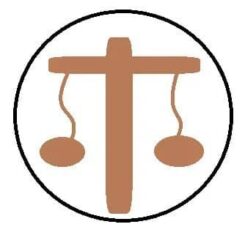Joinder of Causes of Action
O 4r1 person may begin action in person or through lawyer, body corporate shall act by lawyer, next friend or guardian for disabled person act by lawyer.
In adding a Plaintiff (P), Plaintiffs (Ps) must show in SOC cause of action in each P and liability of each P made a D to the action, if D has good counterclaim against any of the Ps D shouldn’t be joined because it may delay or embarrass other Ps. If a P is a man of straw, he shouldn’t be added as P because he can’t pay cost and liabilities.
O 4r2 two situations where P can join 2 or more and different causes of action against same D on a writ: if D is liable on all causes of action and against Personal Representative (PR), executor, or customary successor where both actions arise from the same estate, in any case other than above 2, P need leave by ex parte before issuing writ.
Claims for damages for trespass, perpetual injunction and order for accounts are not different causes of action but ancillary reliefs and may be added to substantive claims such as recovery of possession.
Joinder of actions not same as consolidation of suits. Consolidation involves different suits pending in court between the same parties or their agents covering same subject matter and same reliefs and suits are tried together.
Joinder of Parties
Generally, 2 or more Ds or Ps may be joined in one suit as Ps or Ds without leave of court, where by action each of them some common question of law or fact will arise and reliefs arise out of same transaction. O 4r3 several persons who have joint claim have to sue in one writ and reluctant person be made a defendant, action against D who is jointly liable with another, that other need not be made D to action, where persons jointly liable in contract relief against some but not all may stay proceedings upon application for the others to be added as D.
Where Ds sued severally unlike jointly, judgement against one doesn’t bar subsequent proceedings against others, if two or more Ds have coterminous interest, not necessary to join all as Ds judgement against one binds others, e.g. judgement against grantee binds grantor, purchaser binds vendor. Per Nkum v Andor P is estopped rem judicatam because of judgement against his relative in previous ligation in respect of same land.
O 4r5 court discretion to order or not joinder of party or action if it will delay or embarrass proceedings.
Joinder & Non-joinder
No action is defeated by misjoinder or non-joinder of any party, per Jonah v Duodu at any stage of proceedings court on own motion or application order person improperly made party or no longer necessary be made cease to be party, or any person who ought to be joined or presence necessary be joined as party.
The test to be applied per Gurtmer v Grant if 2 in dispute and determination would affect 3rd person, court has discretion to allow him as party as thinks fit.
Per Sam v AG purpose of joinder is to enable effective and final adjudication of all disputes between the said parties to the suit, application may be made by parties, court or the 3rd party seeking to be joined. Appenteng v Bank of W.A ,
Application is by motion on notice supported by affidavit showing person’s interest, if granted writ shall within 14 days after order be amended and endorsed with reference to the order with date on which order was made, and served on person after noted in cause book, new D shall file appearance. Until writ amended person isn’t party to action. Gandaa v Gandaa failure to amend writ within time limit renders order ineffective unless time extended for amendment 3rd person
